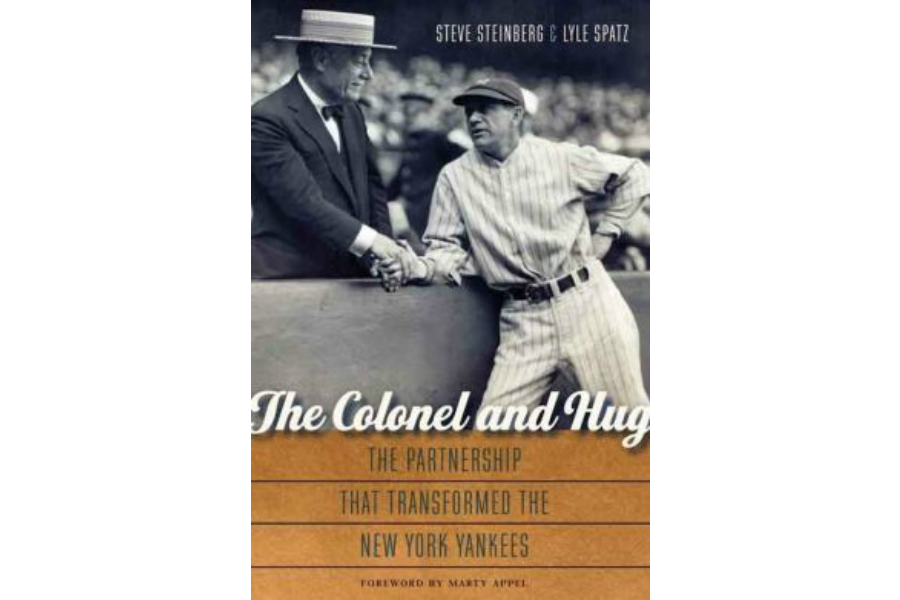While the ascent of the Yankees in the 1920s as a dynastic franchise was built on the slugging backs of such greats as Babe Ruth and Lou Gehrig, two men whose contributions are often overshadowed are those of club owner Jacob Ruppert (who bought out partner Til Huston) and manager Miller Huggins. Their roles in institutionalizing winning for the Yankees comes in for a close examination by two authors who have previously teamed up to write “1921: The Yankees, the Giants, and the Battle for Baseball Supremacy in New York.” Their current exhaustively researched work includes more than 100 pages of back-of-the-book notes and a 21-page bibliography.
Here’s an excerpt from The Colonel and the Hug:
“The 1920 Yankees’ team was the best they had ever had, and the pressure was on Huggins to produce a pennant. ‘It is up to Huggins to drive his club home first or forever hold his peace’ was a sentiment representative of the New York press. ‘Few managers have ever had such material as he. Colonels Ruppert and Huston have spent with lavish hand to produce a championship club. Now Huggins and his men must do their part.’
“Yet one month into the season, Huggins acknowledged that the Yankees were not playing his style of baseball. ‘It’s not that the players don’t do what they are told,” he said, but ‘I like a fast team, and one that can fly around the bases. They compose a team of the slugging type.’ Still, Huggins, more than most, had recognized that Ruth was changing the game from one of speed to one of power, and he was ready to adapt to the new style.”







